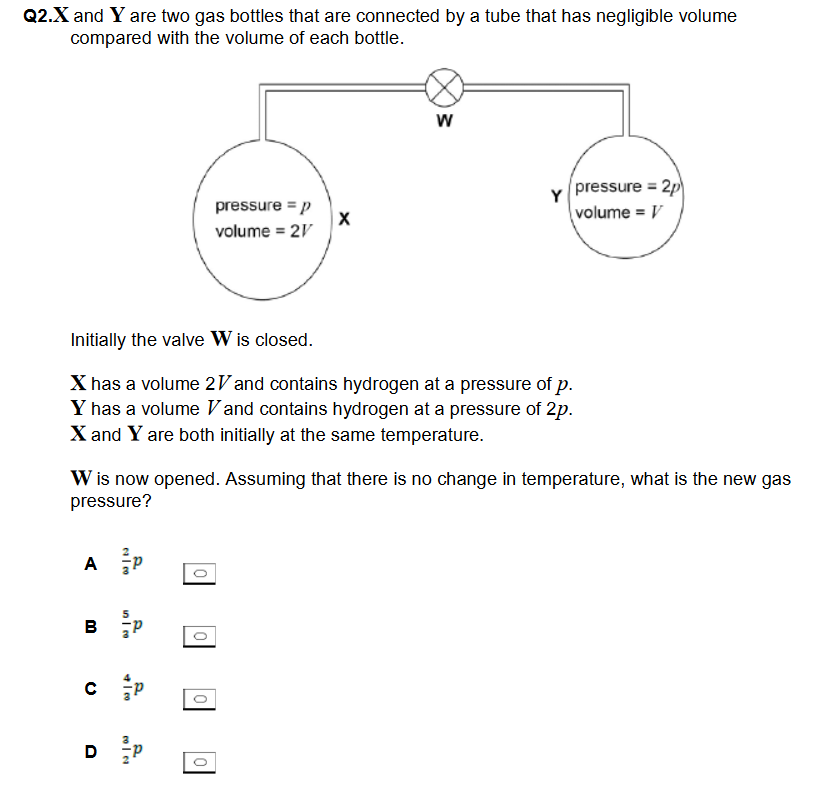X and Y are two gas bottles that are connected by a tube that has negligible volume compared with the volume of each bottle. Initially the valve W is closed. X has a volume 2V and contains hydrogen at a pressure of p. Y has a volume V and contains hydrogen at a pressure of 2p. X and Y are both initially at the same temperature. W is now opened. Assuming that there is no change in temperature, what is the new gas pressure?
I used Boyle's law by saying both container have the constant 2Vp=constant as they are both at the same temperature . When the valve is opened I said the new volume is 3V and I then equated to find the new pressure by saying: where P is new pressure , 3VP=2Vp ..so P=2p/3 . However the answer was 4p/3?

